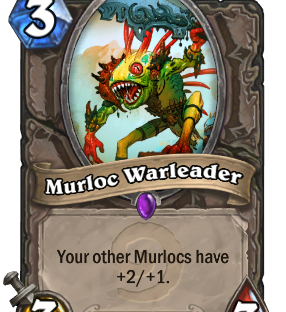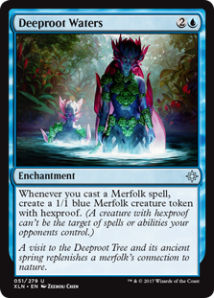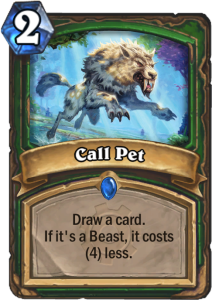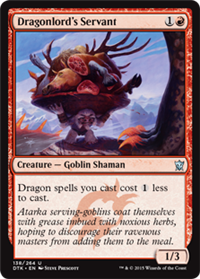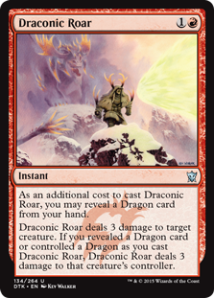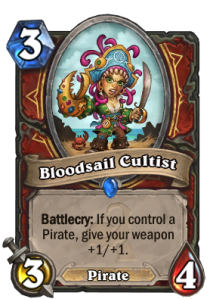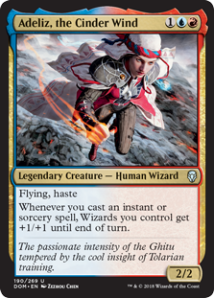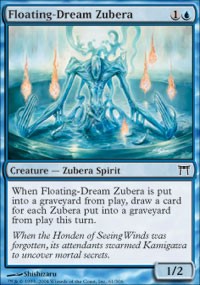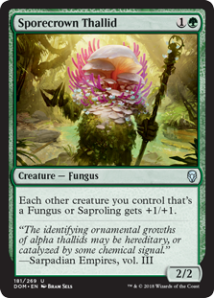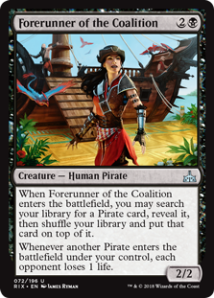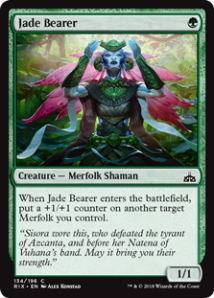In an attempt to understand Hearthstone class identity, I have created this article to list the mechanics of each class and ranked them in terms of support. This was inspired by Mark Rosewater’s Mechanical Color Pie of 2017 for Magic the Gathering. Each is sorted in a primary, secondary and tertiary category. It is important to note that not all mechanics need to have a tertiary or even a secondary entry.
Primary – This mechanic is highly supported in the class. It shows up in the highest volume and often has the strongest version of the mechanic. It would have the most general version of the mechanic.
Secondary – This mechanic occasionally shows up in this class but not all the time or as common as primary mechanics.
Tertiary – This mechanic is minorly supported in the class and other classes probably do the mechanic better.
Disclaimer: I am not a Blizzard employee. Just a passionate fan. If you think some things should be shifted, feel free to comment.
Druid
Primary
- Choose one:
- Druid’s signature mechanic. Druids are all about flexibility and uniquely have cards that allow you to choose between two options. Choose one also have some varieties like Choose Two and Choose Secretly.
- Mana Crystal Manipulation
- Another of Druid’s signature mechanic. Druid is the only class that can add empty mana crystals
- Minion Buffing, Single
- Minion Buffing, Multiple
- Minions
- Druid minions often have more stats than normal. Druid also can summon and buff multiple creature
- Taunt
- Tokens
Secondary
- Armor
- Card Draw
- Direct Damage, Single
- Healing
- Poisonous
- In the form of 1 / 2 spiders
- Recruit
- Stealth
- Only on transformed Druids
- Transform
- Only on minions
- Tribe: Beast
- Druid started to care about Beasts with Whisper of the Old Gods and One Night at Karazhan. This was also when many of the Druid flavored minions had their transformation subtype types changed into Beasts.
Tertiary
- Direct Damage, Multiple
- Minion Damage, Multiple
- Minion Destruction, Single
- Resurrection
- Currently Beast and Taunts
Hunter
Primary
- Charge
- Deathrattle
- Hunter has some powerful class specific minions as well as cards that care about deathrattles, such as triggering them early.
- No minion
- Currently Hunter is the only class that cares about have no minions in your deck, in playstyle that is only possible due to Hunter have spells that summon minions and weapons. The reason why this mechanic is placed in secondary is that it hasn’t been touched on since the first standard that is has been introduced.
- Poisonous
- Rush
- Secrets (2 mana)
- Token
- Tribe: Beast
Secondary
- Direct Damage, Single
- Direct Damage, Multiple
- No cards in hand
- Currently Hunter is the only class that cares about have no cards in hand, a playstyle that is complements aggressive Hunter’s playstyle in emptying their hand. The reason why this mechanic is placed in secondary is that it hasn’t been touched on since the first standard that is has been introduced.
- Stealth
- Weapon
Tertiary
- Card Draw
- Minion Buffing, Single
- Beasts subtype
- Minion Buffing, Multiple
- Beasts subtype
- Minion Destruction, Single
- Recruit
Mage
Primary
- Card Draw
- Card Generation
- Direct Damage, Single
- The main iconic spell is Fireball. They also are a primary holder of “missile” spell effects, spells that do 1 damage to random enemies’ multiple times.
- Direct Damage, Multiple
- Freeze
- Secrets (3 mana)
- Spell Matters
- Mage has several cards that get stronger whenever spells are played and can even make spells cost cheaper or greater. Many times, mages can generate mage spells and has once created spells outside of their own class.
- Tribe: Elemental
Secondary
- Transform
- Only on spelss
Tertiary
- Armor
- Lifesteal
- Minion Destruction, Single
- Token
Paladin
Primary
- Divine Shield
- Minion Buffing, Single
- Minion Debuffing, Single
- Usually attack
- Minion Debuffing, Multiple
- Minion Matters
- Healing
- Paladin has access to healing spells in most expansions and has cards that care about healing.
- Tribes: Dragon, Murloc
- Tokens
- Usually a lot of 1/1 Silver Hand Recruits
Secondary
- Card Draw
- Minion Buffing, Multiple
- Lifesteal
- Secrets (1 mana)
- Resurrection
- Weapons
Tertiary
- Direct Damage, Single
- Direct Damage, Multiple
- Minion Destruction, Single
- Minion Destruction, Multiple
- Recruit
Priest
Primary
- Card Generation
- Usually based off your opponent’s deck and can copy its own cards
- Healing
- Minion Damage, Multiple
- Silence
- Stats Swapping
- Take Control
- Tribe: Dragon
- Resurrection
Secondary
- Deathrattle
- Card Draw
- Based off healing or copying your opponent’s card.
- Minion Buffing, Single
- Minion Debuffing, Single
- Usually debuffing attack
- Minion Debuffing, Multiple
- Minion Destruction, Single
- Usually based on its attack.
- Spell Matters
- Priest has gotten some spell cards supports, such as Radiant elemental, and Lyra. This is meaningful support but will it last more than a few expansions.
- Tribe: Elemental
Tertiary
- Minion Buffing, Multiple
- Minion Damage, Single
Rogue
Primary
- Bounce
- Card Draw
- Rogue has several cards that draw cards. Some of their card draws will copy a card drawn.
- Card Generation
- Specifically, Rogue can copy cards from your opponent’s class or copy its own cards
- Combo
- Deathrattle
- Direct Damage, Single
- Echo
- Minion Destruction, Single
- Stealth
- Poisonous
- Weapon
Secondary
- Mana Crystals Manipulation
- Temporary in the form of Coins
Tertiary
- Direct Damage, Multiple
- Lifesteal
- Minion Destruction, Multiple
- Secrets (2 Mana)
- Spells Matter
- Tokens
- Usually as 4/4 Nerubian
Shaman
Primary
- Battlecry
- Direct Damage, Single
- Direct Damage, Multiple
- Overload
- Shaman’s signature mechanic. Shaman can play spells and minions at lower cost but play the cost with overloaded mana, mana that can’t be used next turn.
- Transform
- Tribes: Elemental, Murloc, Totem
- Windfury
Secondary
- Card Draw
- Card Generation
- Healing
- Freeze
- Mana Crystals Manipulation
- Tokens
- Silence
- Resurrection
- Weapon
Tertiary
- Deathrattle
- Spells Matter
Warlock
Primary
- Card Draw
- Direct Damage, Multiple
- Discard
- Life Loss
- Life Steal
- Milling
- Minion Destruction, Multiple
- Tribes: Demon
Secondary
- Direct Damage, Single
- Echo
- Healing
- Minion Debuffing, Multiple
- Minion Matters
- Take Control
- Tokens
- Tribes: Murloc
Tertiary
- Card Generation
- Mana Crystals Manipulation
- Destroy their own crystals for power
- Minion Buffing, Single
- Demons mostly
- Minion Buffing, Multiple
- Demons
- Stealth
- Imps
- Recruit
- Resurrection
Warrior
Primary
- Armor
- Charge
- Recruit
- Rush
- Taunt
- Weapon
Secondary
- Direct Damage, Single
- Direct Damage, Multiple
- Warrior has some AOE damage, but it is often delegated to a subset (only damaged minions or based on armor and weapon). They are the king of the whirlwind effects, deal 1 damage to all minions.
- Minion Destruction, Single
- Minion Matters
- Warrior cards often concerned with damaged minions. They have minions that effects trigger when damaged, or they have cards that get stronger if they control damaged minions. Warriors are all about fighting and brawling.
Tertiary
- Card Draw
- Card Generation
- Minion Destruction, Single
- Minion Destruction, Multiple
- Tokens
Mechanics
Armor
Primary: Warrior
Secondary: Druid
Tertiary: Mage
Warriors have the most cards that care about gaining armor and having armor. Druid just started receiving cards that care about gaining armor and having armors. Mage only has small access to armor gain, mainly as a way for control playstyle to succeed.
Battlecry
Primary: Shaman
Only Shaman currently cares about resolving Battlecries.
Bounce (Return minions to the owner’s hand)
Primary: Rogue
Only Rogue can return enemy minions to the opponent’s hand. And they often can return their own minions to their hand.
Card Draw
Primary: Mage, Rogue, Warlock
Secondary: Druid, Priest, Paladin, Shaman
Tertiary: Hunter, Warrior
Mage and Rogue has the most card draw. Warlock always have access to their cards with Life Tap. Druid, Priest, Paladin and Shaman all have some level of card draw. Card draw is for Hunter and Warrior tied tightly to their subtypes. Hunter cares about beasts and Warrior cares about damaged minions.
Card Generation
Primary: Mage, Priest, Rogue
Secondary: Druid, Shaman
Tertiary: Hunter, Paladin, Warrior, Warlock
The difference between card generation and card draw is card generation is specifically the generation of cards not in your deck. This could be due to discover or random effects. All classes have access to their own cards. Mage are best at generating cards. They mainly generate Mage spells but can also copy their own minions. Priest can copy an opponent’s cards and their own minions. Rogue copy the opponent’s class cards and their own minions (usually as 1 mana 1/1) and drawn cards as well. Druid and Shaman also gotten a few way to generate more cards. Hunter, Paladin, Warrior and Warlock really only generate their own narrow subtypes (beasts, recruits, damaged minions, and demons).
Card Type Matters
- Minion
- Primary: Druid, Paladin
- Secondary: Warlock, Warrior
- Tertiary: Mage
Druid, and Paladin are heavily invested into minions. Both classes have many cards that create minions and care about when minions are summoned. Warlock also have cards to summon small demons and cares about minions in terms of sacrificing them or having many minions like. Warrior cares a lot about a certain subset, damaged minions. Mage has some cards that care about minions in the current standard.
- Secrets
- Primary: Hunter, Mage
- Secondary: Paladin
- Tertiary: Rogue
Hunter and Mage have the most amount of secrets and cards that care about secrets. Both of these classes have cards that synergizes with secrets in the base set. Paladin also always have secrets but doesn’t always have secrets support. Rogue had secrets introduced in Kobold and Catacombs, but it is unknown if they will get any more support in future sets.
- Spell
- Primary: Mage
- Secondary: Priest
- Tertiary: Rogue, Shaman
Mage cares the most about spells, being the class with the most minions with +1 spell damage, spells generation, and can make spells cheaper. Priest has some spell generation and spell synergies, namely Lyra and Radiant Elemental. Rogue and Shaman both have a few spell generation spells. Rogue can create 1 damage Razorleafs and have the powerful Preparation spell in the Classic Set. Shaman can now create random spells and have access to the Wrath of Air totem.
- Weapons
- Primary: Rogue, Warrior
- Secondary: Hunter, Paladin, Shaman
Rogue and Warrior are the two classes with best weapons, and weapon enhancements. Rogue weapon often has high durability and Rogue weapon buffs can give their weapon’s unique effects. Warrior weapon and buffs usually are all about the weapon’s stats and damage. The other classes get new weapons occasionally each expansion but doesn’t have weapon buffs.
Charge
Primary: Warrior
Secondary: Hunter
Warrior is Charge’s greatest supporter with cards capable of giving other minions charge. However this has led to many balance issues. causing most of its charge cards getting nerf. Hunter also have some support for Charge but mainly when dealing with Beasts.
Deathrattle
Primary: Hunter
Secondary: Priest, Rogue
Tertiary: Shaman
Hunter, Priest and Rogue all have powerful deathrattle minions and cards that synergize off playing deathrattle minions. Hunters uniquely have spells that trigger Deathrattle effects immediately. Shaman is skilled in giving minions deathrattle but doesn’t have stellar deathrattle minions.
Direct Damage, Single (taking Weapons in consideration)
Primary: Mage, Rogue, Shaman
Secondary: Druid, Hunter, Warlock, Warrior
Tertiary: Priest, Paladin
The interesting thing is that every class has some instance of direct damage just at different levels. This direct damage category also includes weapons, which is just conditional direct damage that you sometimes pay life for, and spells that give your hero attack.
Mage is a clear leader in dealing direct damage to minions or hero, with many different spells and can deal the largest amount in a single spell. Shaman also have several direct damage spells, and sometimes has lightning spells that deal a random amount of damage. Rogue can deal damage to minions through spells and own a specific subset of dealing damage to undamaged minions, referring to their sneaky and ambushing nature. They also have several weapons.
In secondary, these classes get direct damage, but not as often as the primary class, and not as powerful. Druid has several direct damage spells, especially when we include spells that gain the hero’s weapons, but these powers are often a low power level. These spells don’t exceed dealing 5 damage. Hunter have several damages dealing spells and weapons, but nothing that deals more than 5 damage. Warlock doesn’t have a lot of direct damage spells, but the ones they do are often strong enough to be played competitively. Warrior can leverage several of its weapons as removal. Outside of weapons, the damage that most spells that Warrior deal range from 1-3.
In tertiary, the other classes don’t have as many direct damage options. Priest doesn’t have many damage cards, since they already have cards that destroy minions. Paladins, even when including their weapons, just don’t have a high number of direct damage options. Funny enough, they can theoretically deal the highest amount of direct damage in a single spell with Holy Wrath.
Direct Damage, Multiple
Primary: Mage, Priest, Shaman, Warlock
Secondary: Hunter, Warrior
Tertiary: Druid, Paladin, Rogue
Mage is still the leader of direct damage even in the AOE form. Shaman has good AOE damage, but sometimes random due to liking lightning. Priest often have ways of dealing AOE damage, sometimes conditional. Warlock just likes dealing damage to everything and everyone.
In the secondary level, Hunter have more access to AOE spell with low damage levels. Warrior is the best at dealing 1 damage to everything, and does that more damage based on its mechanics (damaged minions, armor, and/or weapons)
Down in tertiary, other than Starfall and Swipe (both in the core Basic/Classic set), Druid has not received any new AOE damage spell. Paladin is in the same situation with its Consecration and Avenging Wrath. AOE is also historically one of Rogue’s weakness.
Discard (Self Discard)
Primary: Warlock
Only Warlock discards their own cards and have on-discard effects.
Divine Shield
Primary: Paladin
While Divine Shield appear on Neutral cards, Paladin have several powerful Divine Shield minions, cards that grant Divine Shield and
Echo
Primary: Rogue
Secondary: Warlock
Echo is introduced in the Witchwood expansion. Rogue has the most Echo cards and a card that care about echo cards being played. Warlock can freely grant minions echo.
Freeze
Primary: Mage
Secondary: Shaman
Mage has the most freezing cards and cards that benefit off freezing your opponent cards. Shaman also have freezing cards and benefiters, but it has only been supported mainly in just one set, Knight of the Frozen Throne.
Healing
Primary: Paladin, Priest
Secondary: Druid, Shaman
Tertiary: Warlock
Priest and Paladin commonly have healing spells. Priest is the clear champion of healing, but Paladin also have cards that synergize off healing. Druid and Shaman have cards with pure healing but not cards that synergize with healing. Warlock has some healing, but it always comes with dealing damage or sacrificing a minion.
Life Loss
Primary: Warlock
Secondary: Warrior
Only Warlock cares about having lost life or taking damage from your own cards. Warrior has a specific mechanic involving low life, 12 health or less.
Life Steal
Primary: Warlock
Secondary: Paladin, Priest
Tertiary: Mage, Rogue
Warlock’s healing is mainly in lifesteal, as it connects with the flavor of draining life. As the champion of healing, Priest also have several lifesteal cards. Priest has lifesteal to play into its battle healer theme. Mage’s lifesteal is tied into Frost Lich Jaina and Elementals. Rogue’s lifesteal is tied to weapons.
Mana Crystals Manipulation
Primary: Druid
Secondary: Rogue, Shaman
Tertiary: Warlock
Druid gets the best mana acceleration, both permanent and temporary. Rogue only gets temporary mana acceleration in the forms of creating Coins. Shaman’s Overload is a type of manipulations. Warlock can destroy their own mana crystals.
Milling (Destroy cards in the deck)
Primary: Warlock
Currently Warlock is the only class that can directly destroy cards in the opponent’s deck.
Minion Buffing, Single
Primary: Druid, Paladin
Secondary: Priest, Shaman
Tertiary: Hunter, Warlock
Druid and Paladin have several single target buffs. There buffs are often +N/+N. Priest’s buffs are mainly health base. Shaman’s buffs are mainly attacks buffs. Hunter and Warlock mostly have tribal based buffs, either beasts or demons respectfully.
Minion Buffing, Multiple
Primary: Druid
Secondary: Paladin, Shaman
Tertiary: Hunter, Warlock
Druid is the only class with universal minion buffing. The secondary class only primary buff their subsets. Paladin only buff Silver Hand Recruits on mass. Shaman only buff attack temporary and Murlocs on occasion. Hunter and Warlock have tribal based buffs, either beasts or demons respectfully.
Minion Debuffing, Single
Primary: Paladin
Secondary: Priest
Tertiary: Hunter
Paladin can debuff minions by making them follow the rules, aka change their attack to 1. They can also change minions to 3/3, which arguably can also be a buff. Priest have some attack lowering. Hunter has a common piece of health lowering.
Minion Debuffing, Multiple
Primary: Paladin
Secondary: Priest, Warlock
Paladin can change multiple minions health to 1. In the higher rarity, it can change all stats to 3/3 or changes all attack to 1. Priest and Warlock has some attack lowering.
Minion Destruction, Single
Primary: Rogue
Secondary: Priest, Warlock
Tertiary: Druid, Hunter, Mage, Warrior
Rogue is the strongest class in single target removal. Priest can destroy specific subsets of minion, usually based on attack. This is why four attack minions is one of Priest biggest weakness. Warlock has a few unconditional minion destruction options, some of which might take sacrifices. For the tertiary level, these classes only get a few minion destruction cards, and are highly conditional. Druid has soft destruction options. Even if Druid has spells to destroy minions unconditionally, it will give the opponent cards to replace it. Hunter can destroy a minion but several conditional manners. Mage can only destroy frozen minions. Warrior can destroy damaged minions.
Minion Destruction, Multiple
Primary: Warlock
Secondary: Priest
Tertiary: Warrior
As part of Warlock’s reckless nature, Warlocks can destroy all minion, friendly and enemy. Priest have multiple minion destruction, but it is attack based. Warrior’s multiple minion destruction is very conditional.
Poisonous
Primary: Hunter, Rogue
Secondary: Druid
Hunter and Rogue both commonly have poisonous minions and can grant minions poisonous. Rogue can also give its weapon poisonous. Druid only have access to poisonous in the form of 1/2 Spider minions.
Recruit
Primary: Warrior
Secondary: Druid
Tertiary: Hunter, Paladin, Warlock
Warrior is the most generic user of Recruit, allowing them to recruit any minion. Druid only can recruit a subset, minions that cost 4 or less. Hunter, Paladin and Warlock only recruit an even smaller subset: Hunter only recruit Beast, Paladin recruits 2 cost or less, Warlock recruits Demons.
Resurrection
Primary: Priest
Secondary: Paladin, Shaman
Tertiary: Druid, Hunter, Warlock
Priest can resurrect any sort of minions. Paladin and Shaman can resurrect any minions but it often has to be prepared with a buff cards or situationally spells. Druid, Hunter and Warlock only resurrect their supported subsets.
Rush
Primary: Warrior
Secondary: Hunter
Introduced in the Witchwood expansion, Rush is primary focused on Warrior, and Warriors support having Rush minions. Hunter also have a Rush minion focus and can grant minions Rush.
Silence
Primary: Priest
Secondary: Druid, Shaman
Silence effects mostly appear in Priest. Druid and Shaman only have one silence effect card each, but those cards are in the core Basic/Classic set.
Stats Swapping
Primary: Priest
Priests can swap their own minions attack and defense. Or they can swap their minions attack and defense with other minions
Stealth
Primary: Rogue
Secondary: Druid, Hunter
Tertiary: Warlock
Rogue are the most common user of stealth and have cards that grant stealth. Druid and Hunter occasionally have stealth minions but usually flavored as beasts or druid transformations. Warlock has stealth minions but only has supportive imps.
Take Control
Primary: Priest
Secondary: Warlock
Priest can take control of any minion permanently in Mind control and has other subsets of take control, either permanently or temporary. Warlock is the only class that can give a minion away.
Taunt
Primary: Druid, Warrior
Both Druid and Warrior care about playing Taunt minions, buffing Taunt minions and have powerful Taunt minions.
Transform
Primary: Shaman
Secondary: Druid, Mage
Shaman have several effects that transform their own minions or their opponent minions. Often Shaman can “evolve” their minions, transforming them into minions that cost 1 more. Druid only transform using their choose one minions. Mage only have spells that transform by “polymorphing” minions, transforming them into specific animals.
Tribal Matters
- Beast
- Primary: Hunter
- Secondary: Druid
Hunters are rarely seen without Beasts and have the most cards that create, buff and synergize off playing beasts. Druids also started to gain some syngerize occasionally after and the update to relabel Druid’s transformation into beasts.
- Demon
- Primary: Warlock
A warlock signature tribal class.
- Dragon
- Primary: Paladin, Priest
- Secondary: Warrior
Both Paladin and Priest have Dragons and cards that support Dragon, since Blackrock Mountain. Warrior has not received Dragon support since Blackrock.
- Elemental
- Primary: Mage, Shaman
- Secondary: Priest
Both Mage and Shaman have several Elementals and cards that support Elementals, since the creation of Elementals in Journey to Un’Goro. Priest have more Elementals than other classes but doesn’t have cards to support them.
- Mech
- Primary: Mage, Rouge, Shaman
- Secondary: Hunter, Priest, Warrior
- Tertiary: Druid, Paladin, Warlock
Mechs are in a strange spot in that when they are supported in Goblins vs Gnomes, they were also the first tribal decks supported (outside of Murloc and Pirates in the Classic set). In the set, all classes received class Mechs and class Mech synergy. So the ranking in this category is best mainly on the strength of the Mech support.
- Murloc
- Primary: Paladin, Shaman
- Secondary: Warlock
- Pirate
- Primary: Rogue, Warrior
Only Rogue and Warrior have class specific Pirates, who naturally plays well with the classes’ support of weapon.
- Totem
- Primary: Shaman
A shaman signature tribal class.
Token
Primary: Hunter, Druid, Paladin
Secondary: Shaman, Warlock
Tertiary: Mage, Rogue, Warrior
Windfury
Primary: Shaman
Shaman is the only class that can bless creatures with windfury and has minions and a weapon with windfury.
Notes
In short, the classes can be divided like so:
Minion Focused: Druid, Hunter, Paladin
Hybrid: Rouge, Shaman, Warrior
Spell Focused: Mage, Priest, Warlock
Choose one: I would love to see Choose One become shared with more classes. Choose one is a great mechanic that can be offer classes more versatile and decision points (as long as Choose one cards are well designed of course). Druid wouldn’t lose that much in terms of class identity. They can still be the specialist in Choose one, with variations like Choose Two and choose both.
Warlock needs more class identity. The issue with Warlock is that they have a touch of everything because their core identity is tied into sacrifice. But sacrifice is not an effect; it is just a cost. When a designer creates a card for Warlock, they feel they can give any type of effect to Warlock as long as they balance it was a high enough cost.

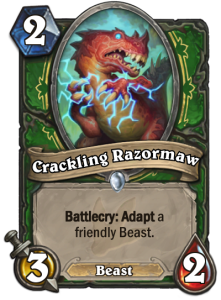 Constructed: 3.5
Constructed: 3.5 Constructed: 3
Constructed: 3

 Constructed: 4
Constructed: 4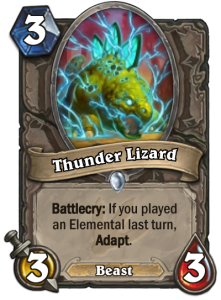 Constructed: 1
Constructed: 1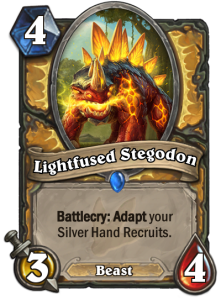 Constructed: 3
Constructed: 3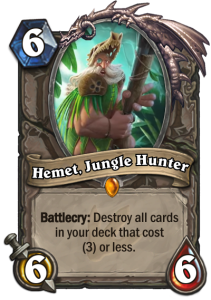 Constructed: 1.5
Constructed: 1.5 Constructed: 4.5
Constructed: 4.5 Constructed: 4.5
Constructed: 4.5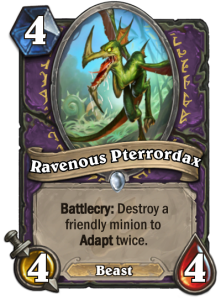 Constructed: 4
Constructed: 4 Constructed: 1
Constructed: 1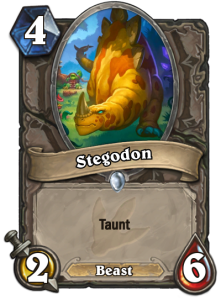 Constructed: 1
Constructed: 1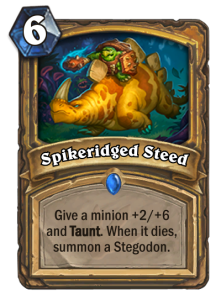 Constructed: 3
Constructed: 3 Constructed: 2
Constructed: 2 Constructed: 1.5
Constructed: 1.5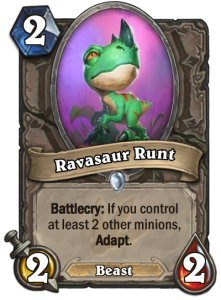 Constructed: 1
Constructed: 1


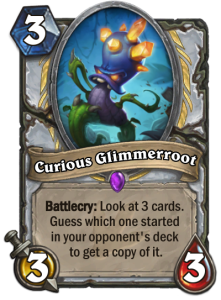 Constructed: 4
Constructed: 4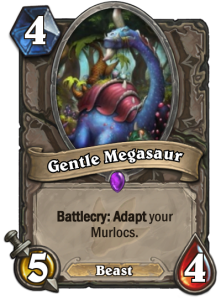 Constructed: 2.5
Constructed: 2.5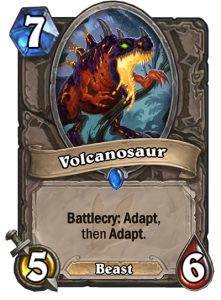 Constructed: 1
Constructed: 1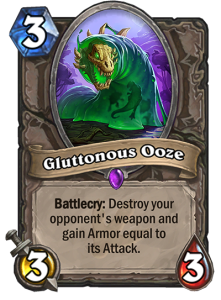 Constructed: Tech
Constructed: Tech Constructed: 4
Constructed: 4 Constructed: 1
Constructed: 1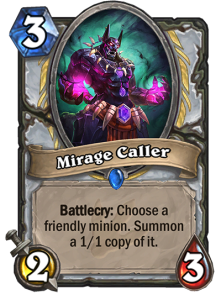 Constructed: 2
Constructed: 2 Constructed: 2
Constructed: 2

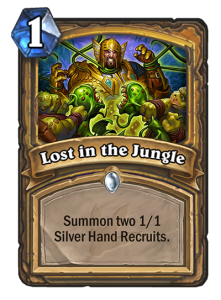 Constructed: 3.5
Constructed: 3.5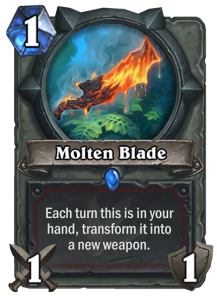 Constructed: 1
Constructed: 1



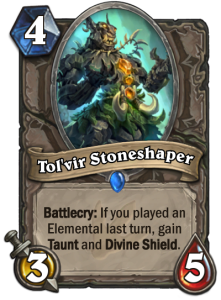 Constructed: 3
Constructed: 3
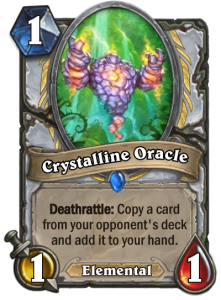 Constructed: 3.5
Constructed: 3.5
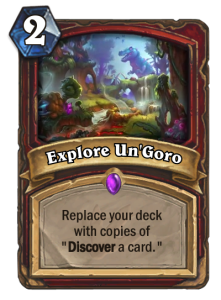
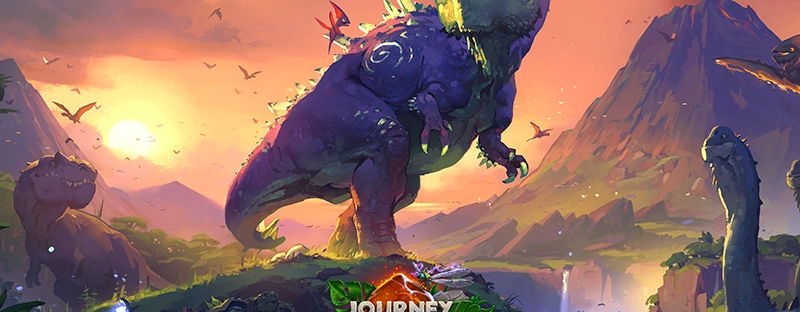
 Volcano
Volcano